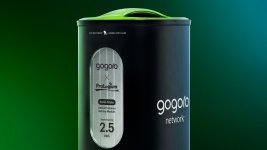Yes, this is certainly an aspect.
A density, is defined as mass of a unit volume of a material substance. The formula for density is d = M/V, where d is density, M is mass, and V is volume. Density is commonly expressed in units of grams per cubic centimetre.
The density is what we are looking at. Cells have two density numbers, an " Energy d" and a " Power d". We will look at the " Energy Density " today.
The cylindrical cell today typically strives for energy density, not power density ( whole nother field of science, there) . Flat cells are typically power dense, but this does not play a role in the discussion today.
It is called packing density science. You will only EVER get 90.6% of the space filled with a cylinder, can shaped object. You can fill a volume 100% with a box shaped object. A sphere? You can only ever get 70% of the volume filled ( packed). However, a sphere is very strong, in stacking. The strongest. Then is the tube, cylinder. The box, rectangle, square is the weaker, in its stacking ability, .
https://en.wikipedia.org/wiki/Packing_density
https://en.wikipedia.org/wiki/List_of_shapes_with_known_packing_constant
Yes, I certainly agree with you, if you have a space, why not FILL it all the way ( 100%). One of the reasons I think cylinder cells are stupid.
Given two chemistry with the same energy density, int he same space, you will fit 10% more energy in the " rectangle shaped packing" than the " cylinder shaped packing".
Lets say our two example cells harbor an energy density of 180wH / kG. One is cylindrical, and one is a flat rectangle ( like a typical lipo cell). You fill the space ( bike battery box you have) with each type, counting the number of cells/ energy you can fill in the space.
The flat, lipo or block shaped battery will fill 100%, you will have a energy density of 180wH/kg.
The cylindrical cells ( 18650, 21700) fill 91%, ... ... so your energy density is 163.8 wH/kG now.
Now you can hold physically LESS energy in the same space. Even though you thought the " 18650 were better cause everyone used them". You wasted 10% of the available " real estate" on the bike... ( real estate is a premium on a bicycle).
So a fully filled volume of a 160wh/kg lipo will give the same final energy density of a 180wH/kg 18650. Everyone says " 18650 are so much better, look at the numbers! they hold more " but really, in practice, they will not because the cylinder only ever fills 90% of the volume.
But it is stronger in stacking. That is all.
It makes a divergence when the difference in energy density is greater than 10%... So a 18650 with 220 wH/kg density will fill a space with the same energy as a 200wH/kg 100% fill. But 200 wH/ kG is rare... in the lipo cells, the energy density maxes out around 180 wH/ kg with todays technology...
There is more copper in Power cells, so the mass per volume reflects that.
SO: IF you can buy a cell 18650 with greater than (( X wH/kG ) + (.1X)) ...( 180 + 18) ....198wH / kG, you CAN fill the volume with more energy density.
Now, cylindrical cells were typically high energy dense. So you go out and but the best you can get, 200wH/kg, energy cylindrical cells. Fill the same space. Now you are at the same energy density of the 100% filed flat rectangle lipo shaped cell pack. 182wH/kg.
Spend a ton, read the advertisements, spend alot, and you might buy the !!! 240wH/kG !!! ( best of the best unobtainium only ever lied about in advertisements) cylindrical cells, and now you have MORE energy density than the 180wH/kg pack in the same volume with a 100% fill. Alot more. So this is why people love the 18650. Strong, packing, and you can fill a 90% space with a density that will beat the 100% fill of the 180wH/ kg cell lesser pack... . but ONLY when you buy super duper energy dense cells.
However, if both chemistry are the same.. ( like the 180wH/kg example above) you will CERTAINLY fit MORE WATT HOURS in the 100% fill.
So if you can beat your flat, rectangle pack with 10% or greater better energy density cells, you will gt more energy in the same volume.
I love rectangular shaped cells, never built with a cylinder...
Cylindrical cells are for flashlights and cheap tool packs in my opinion.
The entire ( everyone) highway going EV manufacturing world uses 100% fill, packing, except for one car manufacturer. Every manufacturer of a modern electric vehicle chose a cell that fills 100%, not 90%. Every. Single. One.


